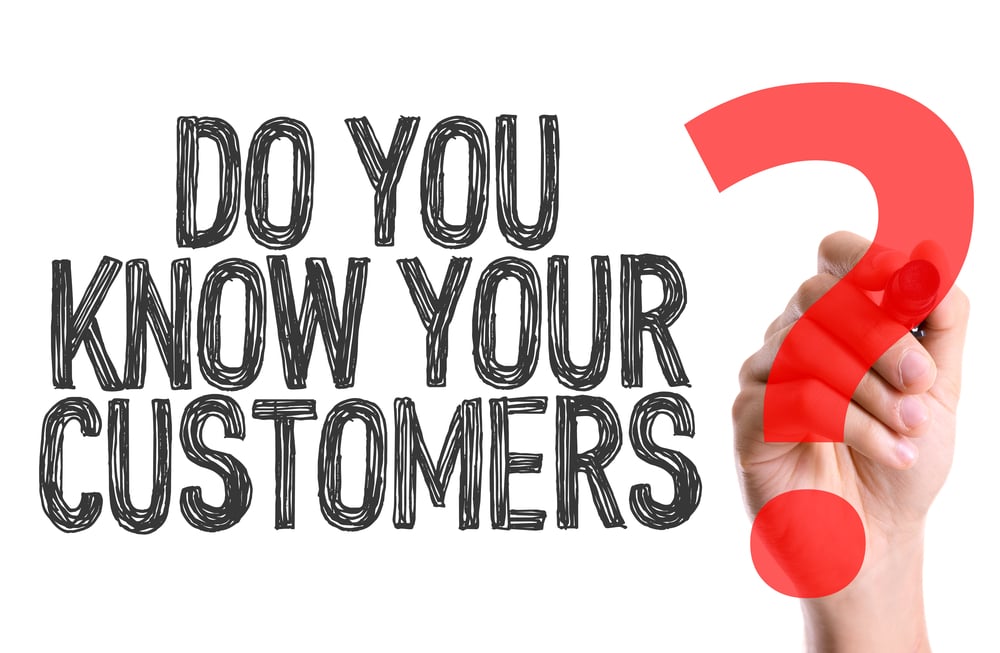Around 100,000 years ago humans began to communicate using language.
Language would transform us into the most powerful species on the planet.
Language enables us to do many unique things:
- Create a shared set of values and beliefs
- Create a social contract of law and order/rules and norms
- Share stories with characters that we identify with
- Create belonging and group identity
- Create entities that organize society (money, governments, business, etc.)
I believe that language and communication is the most powerful tool humans have and ever will create.
In a lot of ways, language is like a business: it shapes our culture, creates organization, and uses stories to scale. It also creates belonging and identity.

When Communication and Business Interact: Branding and Marketing
The most impactful way a business can use language is to build trust.
From the moment that people first started selling goods to their customers, they communicated and built relationships with them.
This makes sense. As humans, we crave connection and community in all of our interactions.
Industrialization: The Main Way that Being a Customer Has Changed in Our Society
Fast forward to the late 1800s and early 1900s. The innovations brought on by Industrialization enabled our agrarian society to transform into one of mass production and economic growth.
This resulted in the development of the modern corporation.
Unlike before when you bought a chair from a craftsman in town that you personally knew, you now go to Target or Walmart. Same with your shoes. There’s a good chance that you don’t personally know a cobbler.
Over the last 150 years the way that we buy most things has changed in two significant ways:
- We now rely on others to produce most of the things we use (food, clothing, entertainment, etc.)
- We no longer have a personal relationship with most of the people that produce our goods
Branding Creates Personal Relationships
This created a dilemma: Today’s businesses are able to provide services to more customers than then other organizations have historically, but they also don’t have the same personal relationship that the local craftsman had with us in the past.
Anybody that owns a business has experienced this dilemma to some degree. You want to provide good service to as many people as you are able to, while also maintaining a personal relationship with them.
How is this accomplished?
Branding.
What is Branding?
Scholars and laypeople alike have varying definitions of what branding is.
My definition of a brand is an identity that is used to create and communicate shared values, belonging, and trust.
I don’t need to know Phil Knight, the founder of Nike (as cool as it would be) to know what Nike stands for. This is because Nike’s brand serves as a proxy for Phil Knight. Anytime somebody wears one of their shoes, puts on a shirt, or performs in their athletic gear it communicates the values of self-actualization and putting in the work every day; “Doing it.”
- A good brand will create a community centered on a shared set of values and belonging built upon the foundation of trust.
- Branding also sets expectations for customers experience (another essential ingredient of building trust)
Branding Builds Trust and Makes Buying Easier For Your Customers
You provide a valuable service to your customers, and you want to communicate this to them. The most reliable way to do this is through branding.
There are many other cleaners that offer similar services to yours, and buyers don’t like decisions to be more complicated than they need to be. This might sound obvious, but it needs more explaining.
Let’s say that you are going to the store to buy deodorant. Most people aren’t going to research all of the ingredients put in the deodorant because people don’t have the time or desire to do that. They’ll buy the deodorant that they want for many reasons, and one of the big ones is the brand.
A brand provides a shared set of values and comes with a set of expectations. Put together, these build trust.
The same is even true for big purchases like cars. When my last car broke down I knew that I needed something reliable to drive that had high fuel efficiency. I had never owned a Honda before, but many people had told me that they are reliable cars and had good experiences driving them for years with no issues. Within a week I bought a Honda. I know next to nothing about cars, but the dealership downtown has a good reputation and Honda has years of reliability and getting the job done.
You want to do the same thing with your brand. You don’t build trust in your service by telling your customer, “I’m going to spray some product on your carpet, apply water, agitate it with a giant brush, and this will dissolve all of the dirt and organic compounds that have built up.”
That’s a technical explanation of the service you’re providing. Your customer probably doesn't know what that means and it's a distraction from the real benefit that you're providing.
That’s not a brand.
A brand is the summation of the benefits and value that you bring your customer. It makes what you offer familiar and memorable. It is a powerful way to help make the buying process easier for your customers. Here are some examples:
- I help my customer’s feel at home by providing a clean environment
- I provide quality service and a high degree of professionalism (show up on time, professional dress, professional equipment)
- Spending a certain amount of time cleaning
- Specializing i.e. urine, upholstery, grout, etc.
- Distinguishing yourself by using a pleasant scent (Coconut cleaners is a great example of this).
- Distinguishing yourself based on price
How to Create a Brand
1. Understand your unique selling proposition
What do you provide that your customers are most proud of? What value do you provide that distinguishes you and sets you apart? What do you keep hearing over and over from your customers that impress them?
Keep in mind, this is not what you are most proud of, but what your customers like the most.
2. Center your messaging around your unique selling proposition
Once you know what your customers like, build your emails, business cards, logo, and your conversations around this message. The goal of these messages is to build trust and show that you understand their needs and are able to meet them.
I’ve covered how to do identify, attract, and communicate with your audience in my target marketing blog post series:
Follow this Guide to Understand How to Set Yourself Apart to Your Customers
3. Be consistent with your message
One of the biggest things that build trust in a relationship is consistency. People want to use services that are reliable and that they can trust. This means that you are always communicating and delivering on your brand proposition.
Conclusion
Branding is a way to communicate value in order to build trust. If you're not branding it can be hard for your customer to remember the value that you provide in a memorable way. Branding is the tool that you use to build associations with a particular benefit that you provide. Branding makes you memorable, identifies you, and helps you to stand out.
If you need any help with your branding or have any questions, don't hesitate to reach out. I'm more than happy to take a look at what you're doing and provide recommendations.
You can reach me at drew.crawford@aramsco.com
